The Three Witches Spell from Shakespeare’s Macbeth is great to read or listen to for Halloween.
Some of the lines in this speech are offensive to our twenty-first century ears, and I hesitated to print it here, on a site with significant family traffic. But rather than censor the greatest writer in the English language, I think it’s better to present his words honestly, and I encourage my readers with children to use the opportunity to discuss the changes in attitudes that society has gone through in the four hundred years since Shakespeare lived.
Below is The Witches Spell from Act 4, Scene 1, of Macbeth. I’ve added annotations in parentheses below any lines where I thought it’d be helpful for the meaning. I’ve also posted a couple of interesting renditions from YouTube of this scene. One is a “straight” rendition. The other is by David Solomons. He did a very Halloween-like singing rendition of it. At the end, I posted the whole spell as a poem, so you can read it all the way through without distractions.
Enjoy! -Mama Lisa
The Tragedy of Macbeth
Act 4, Scene 1
SCENE I. A cavern. In the middle, a boiling cauldron.
Thunder. Enter the three Witches
First Witch
Thrice the brinded cat hath mew’d.
(Brinded means tawny or streaked.)
Second Witch
Thrice and once the hedge-pig whined.
(A hedge-pig is a hedgehog.)
Third Witch
Harpier cries ‘Tis time, ’tis time.
(A harpier is believed to be a harpy which is a Greek and Latin mythological monster – having a woman’s head and body, but with a bird’s wings and claws.)
First Witch
Round about the cauldron go;
In the poison’d entrails throw.
Toad, that under cold stone
Days and nights has thirty-one
Swelter’d venom sleeping got,
Boil thou first i’ the charmed pot.
ALL
Double, double toil and trouble;
Fire burn, and cauldron bubble.
Second Witch
Fillet of a fenny snake,
(Fenny means coming from a bog)
In the cauldron boil and bake;
Eye of newt and toe of frog,
Wool of bat and tongue of dog,
Adder’s fork and blind-worm’s sting,
(An adder is a venomous snake)
Lizard’s leg and owlet’s wing,
(An owlet is a young owl)
For a charm of powerful trouble,
Like a hell-broth boil and bubble.
ALL
Double, double toil and trouble;
Fire burn and cauldron bubble.
Third Witch
Scale of dragon, tooth of wolf,
Witches’ mummy, maw and gulf
(Witches’ mummy was a medicinal substance)
(Maw is the stomach, gulf is the throat)
Of the ravin’d salt-sea shark,
(Ravin’d means ravenous)
Root of hemlock digg’d i’ the dark,
Liver of blaspheming Jew,
Gall of goat, and slips of yew
(Gall is bile, slip of yew means a cutting from a yew tree)
Sliver’d in the moon’s eclipse,
Nose of Turk and Tartar’s lips,
Finger of birth-strangled babe
Ditch-deliver’d by a drab,
(Drab = whore – these lines mean the baby
was delivered in a ditch by a whore).
Make the gruel thick and slab:
(Slab means viscid/semi-liquid)
Add thereto a tiger’s chaudron,
(Chaudron is a coppery color)
For the ingredients of our cauldron.
ALL
Double, double toil and trouble;
Fire burn and cauldron bubble.
Second Witch
Cool it with a baboon’s blood,
Then the charm is firm and good.
Witches Spell Poem
Thrice the brinded cat hath mew’d.
Thrice and once the hedge-pig whined.
Harpier cries ‘Tis time, ’tis time.
Round about the cauldron go;
In the poison’d entrails throw.
Toad, that under cold stone
Days and nights has thirty-one
Swelter’d venom sleeping got,
Boil thou first i’ the charmed pot.
Double, double toil and trouble;
Fire burn, and cauldron bubble.
Fillet of a fenny snake,
In the cauldron boil and bake;
Eye of newt and toe of frog,
Wool of bat and tongue of dog,
Adder’s fork and blind-worm’s sting,
Lizard’s leg and owlet’s wing,
For a charm of powerful trouble,
Like a hell-broth boil and bubble.
Double, double toil and trouble;
Fire burn and cauldron bubble.
Scale of dragon, tooth of wolf,
Witches’ mummy, maw and gulf
Of the ravin’d salt-sea shark,
Root of hemlock digg’d i’ the dark,
Liver of blaspheming Jew,
Gall of goat, and slips of yew
Sliver’d in the moon’s eclipse,
Nose of Turk and Tartar’s lips,
Finger of birth-strangled babe
Ditch-deliver’d by a drab,
Make the gruel thick and slab:
Add thereto a tiger’s chaudron,
For the ingredients of our cauldron.
Double, double toil and trouble;
Fire burn and cauldron bubble.
Cool it with a baboon’s blood,
Then the charm is firm and good.
This article was posted on Wednesday, October 29th, 2008 at 5:43 pm and is filed under Authors, Books & Stories, Countries & Cultures, England, English, Halloween, Halloween Songs, Holidays Around the World, Languages, Macbeth, Mama Lisa, Shakespeare, The Witches Spell, United Kingdom, USA, Video, YouTube. You can follow any responses to this entry through the RSS 2.0 feed. You can skip to the end and leave a response. Pinging is currently not allowed.




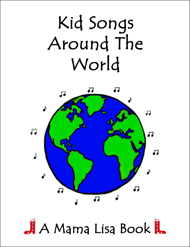
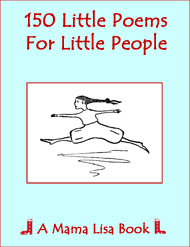
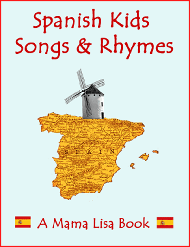
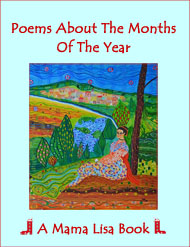
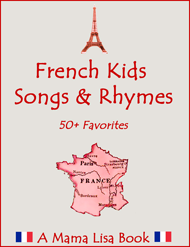
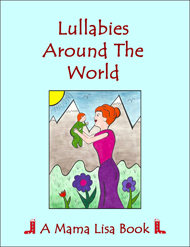
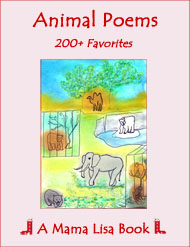
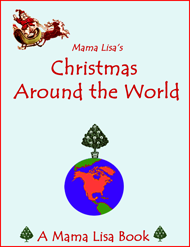
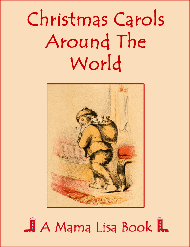
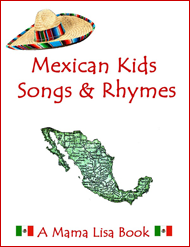
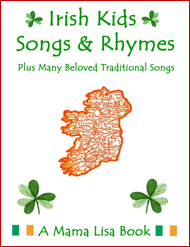
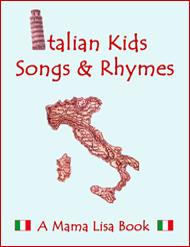
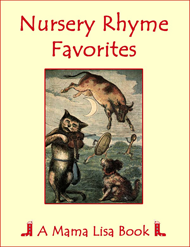
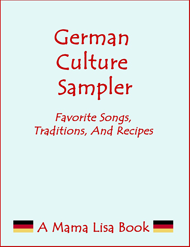
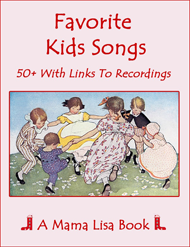
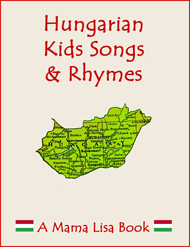
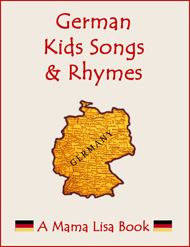

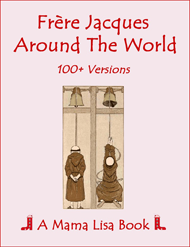
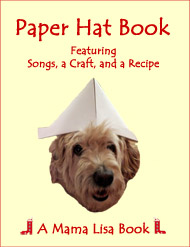
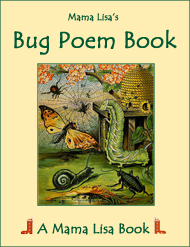
March 15th, 2009 at 2:07 pm
Good, just what I need to celebrate IDES of march
July 31st, 2009 at 8:06 am
I agree with you. It’s a perfect rhyme for Halloween. The clever thing about Shakespeare is how he used different types of rhyme and verse for his different characters. The witches also speak in verse but it’s done in a way that sets them apart from other characters. In fact, they often chant in a sing-song way that sounds a lot like a scary nursery rhyme. The meter and the rhyme kind of make the chanting seem a little silly and benign at first but as they start throwing out words like “hell-broth” and “eye of newt” and “finger of birth-strangled babe,” things start to get scary. If you want to get more formal, many of their lines are delivered in what’s called “trochaic tetrameter” with “rhymed couplets.” For more information on what exactly these are and how to explain them to even younger kids, there is an excellent site called Shmoop where Macbeth is explained in a simple down to earth style.
September 20th, 2009 at 2:11 pm
You missed a couple lines.
September 20th, 2009 at 2:13 pm
Please let me know which ones because I proofed it.
February 11th, 2010 at 12:31 pm
hey, that is good but i need ideas for a spell of my own and i just can’t think of any! any help would be apreciated.
March 29th, 2011 at 12:45 pm
I think that this is a very interesting poem I give Macbeth 5 thumbs up (from a scale 1-5) In fact in my classroom we are doing this poem this week.
March 29th, 2011 at 12:50 pm
Love it I know now what my favorite poem is this one Enter The Three Witches
April 27th, 2015 at 6:06 pm
A drab was not a prostitute. It was a destitute pauper. There is a world of difference!
May 16th, 2015 at 3:27 pm
I think “Drab” is absolutely intended to mean “prostitute” in this speech.
June 19th, 2016 at 7:12 pm
I love the three witches poem. It’s scary but mysterious and exciting at the same time. It’s definitely perfect for Halloween and the phrases that are used are creepy but amazing.
July 26th, 2016 at 6:03 pm
hmmmm.i love it so muchhhhhhhhh………………………..
February 27th, 2017 at 4:10 pm
To clear this up, drab in older times did mean a slovenly woman or a prostitute, as defined by the OED as quoted below;
drab 2 |drab|
noun archaic
1 a slovenly woman.
2 a prostitute.
ORIGIN
early 16th cent.: perhaps related to Low German drabbe ‘mire’ and Dutch drab ‘dregs’.
June 8th, 2017 at 10:06 pm
OED says ‘chaudron’ is a variant of ‘chaldron’, and ‘chaldron’ is ‘an obs. form of CHAWDRON, entrails’. Also you misspelled ‘slivered’ once. Nice page, though.
February 13th, 2020 at 1:23 am
Wonderful wordsmithing – the bard still rocks, even when describing my mother and her daughters 😳
October 28th, 2020 at 2:01 am
Just plain good. Can one ever do better than the bard? Oh, yes … always a treat. Thank you for bringing it to everyone with explanations.
November 9th, 2020 at 12:03 pm
10 years on, & a new theory is coming out about these names
https://people.howstuffworks.com/is-eye-of-newt-real-thing.htm
I do think that Shakespeare meant these to be literal ingredients in his fantastic rhyme – these weren’t simple earth healers but very malevolent women